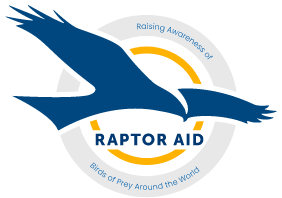Ravens
Now would be a great time to get out and see your local Raven family! An early breeder here in the UK and now a much more common sight in most parts of Britain they are the largest member of the corvid family, they are often recognised by the cronking & pruk pruk calls as they fly over. Raven young will have now fledged and parent birds will be leading them out on feeding sprees onto neighbouring hill sides and pastures. Raven nest on a cliff in Wales often re used annually, an incubation period of 21 days and it is not unusual for them to rear 5-6 young. (C) Paul Roberts
Raven nest on a cliff in Wales often re used annually, an incubation period of 21 days and it is not unusual for them to rear 5-6 young. (C) Paul Roberts Raven above nest site in a pine tree. This pair of birds will also nest on a rocky crag within the woodland, Ravens have been known to dismantle a nest site and move it to a new location.
Raven above nest site in a pine tree. This pair of birds will also nest on a rocky crag within the woodland, Ravens have been known to dismantle a nest site and move it to a new location.  Ravens are large birds in flight with a tell tale diamond or wedge shaped tail. If you see them perched look for a very broad heavy bill.
Ravens are large birds in flight with a tell tale diamond or wedge shaped tail. If you see them perched look for a very broad heavy bill. Getting to a Raven nest is either a long abseil down a cliff or a big climb up a tree. My local pair this year nested in a large Scots pine, the tree needs to be large to hold the substantial stick nest which in turn holds up to 6 big healthy chicks. The nest is also lined with wool and local livestock hair.
Getting to a Raven nest is either a long abseil down a cliff or a big climb up a tree. My local pair this year nested in a large Scots pine, the tree needs to be large to hold the substantial stick nest which in turn holds up to 6 big healthy chicks. The nest is also lined with wool and local livestock hair. This nest contained 5 healthy chicks which are only a week at the most from fledging. These birds were fitted with a BTO ring each in case we meet them again. Ravens are long lived birds with the oldest BTO record of nearly 18 years, once these birds have fledged they spend time learning from their parents before spending the winter in groups foraging.Ravens are regarded by some as an honorary bird of prey, they will eat a wide variety of things and are incredibly intelligent birds. They are a bird that has been linked with folklore and witch craft, revered by some and despised by others. Sadly in present day some people still resent Ravens because of their resourcefulness when it comes to feeding, Ravens have been known to target livestock including new born lambs. There have recently been calls to add Ravens to the a General Licence in Scotland allowing them to be legally controlled at will to protect livestock and game interests. Ravens have only recently started to recover in certain areas from years of persecution, for Raptor Aid it's seems ridiculous that mans answer when it comes to nature is to start culling it when it affects our interests.A petition has been started to help the continued protection of Ravens here.
This nest contained 5 healthy chicks which are only a week at the most from fledging. These birds were fitted with a BTO ring each in case we meet them again. Ravens are long lived birds with the oldest BTO record of nearly 18 years, once these birds have fledged they spend time learning from their parents before spending the winter in groups foraging.Ravens are regarded by some as an honorary bird of prey, they will eat a wide variety of things and are incredibly intelligent birds. They are a bird that has been linked with folklore and witch craft, revered by some and despised by others. Sadly in present day some people still resent Ravens because of their resourcefulness when it comes to feeding, Ravens have been known to target livestock including new born lambs. There have recently been calls to add Ravens to the a General Licence in Scotland allowing them to be legally controlled at will to protect livestock and game interests. Ravens have only recently started to recover in certain areas from years of persecution, for Raptor Aid it's seems ridiculous that mans answer when it comes to nature is to start culling it when it affects our interests.A petition has been started to help the continued protection of Ravens here.
